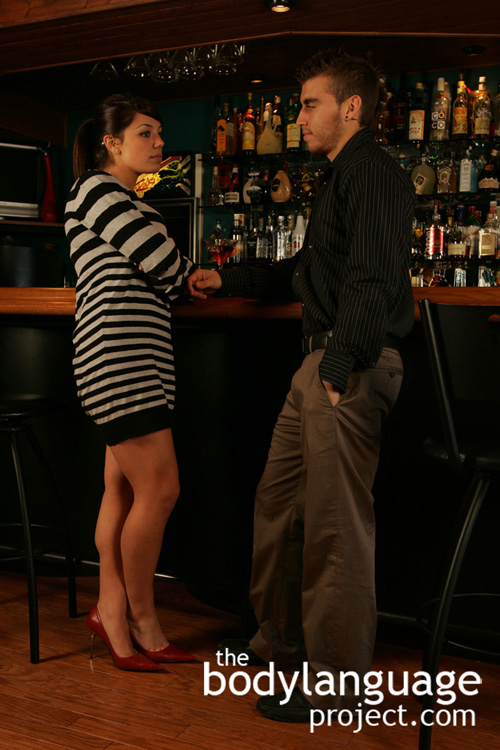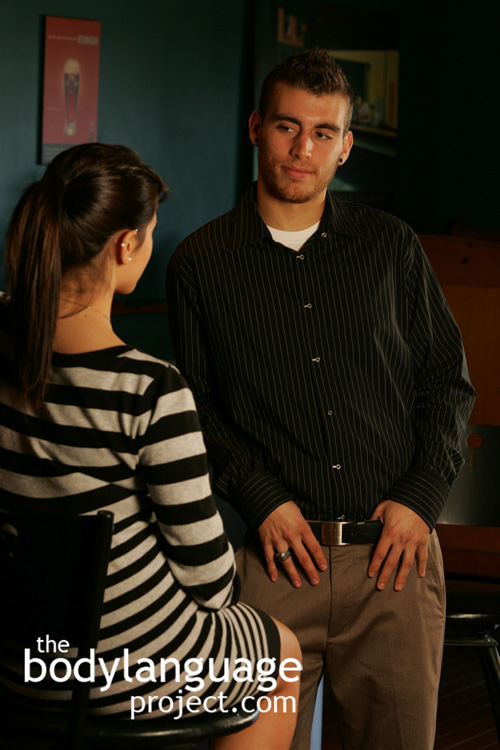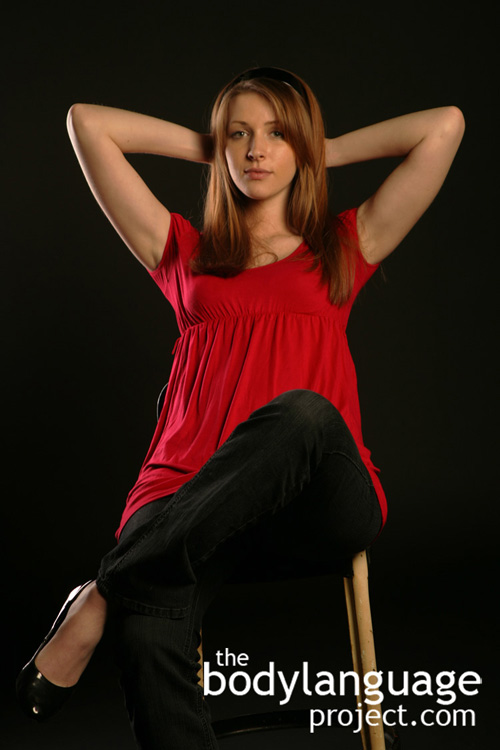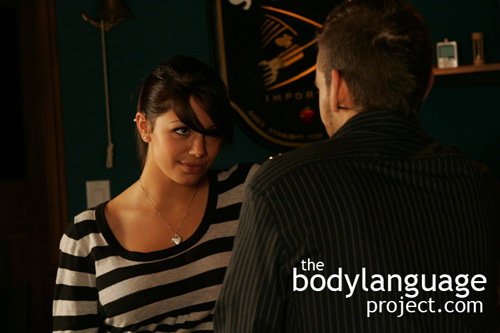
Strutting like a peacock. The hands draw attention to our manhood.
Having the hands on the hips or “arms akimbo” is to display like a peacock, even in people! It makes the body take up more space and hence appear larger so as to assert dominance. All the fingers also curl inward so that they point toward the crotch drawing attention in that direction which punctuates the point even further. The thumbs might also be tucked into the belt or into belt loops serving to “frame the genitals.” The message said is “There are issues here”, “Things are not right”, “I’m standing my ground” or “I’m a virile male so check me out!” Women can also be seen holding the posture although more rarely, and when they do, they will hold their hands on their hips and point their fingers to their buttocks. Pointing therefore, puts emphasis on our best assets while we state our case. Fingers pointed backwards as women do more often is a more inquisitive posture than an authoritarian one.

She’s displeased and thinks you should know better.
Sexual dimorphism is a word used to describe the differences in form between males and females within the same species. In other animals, it includes horns and antlers, tusks, waddles, elaborate coloration and plumage, amongst many, many others. In humans, the dimorphism includes hairiness, perpetually swollen breasts versus muscular chests, square jaws and manly noses, internal versus external genitals, muscle mass differences, amount of fatty tissue, and hip to waste ratios (where the ratio produces an hour glass in women). In most cases, the differences between men and women are not very pronounced compared to many other animals. But when we do differ, men and women tend to display (exploit) their differences in effort to attract attention.
Like most of life’s endeavors, attention is competition based. We compete both against our own sex and for attention from the other sex. This seems like one in the same, but it is not. For example, appearing larger, heavier, taller or more muscular can serve to pique the interest of women, but also to repel nearby rivals. This is not to say that our species is cutthroat where everything boils down to competition. Instead, a large part of life involves cooperation. However, how would we know who best to cooperate with, if it wasn’t for their advantages in competition!
The hands on hips gesture is one of the ways men puff out to appear more dominant and attractive to the opposite sex and repel competition from the same sex. The cue cluster accompanying the hands-on-hips also includes an upright posture, chin up, chest out and the legs at slightly wider than shoulder width. The hands-on-hips is also a ready posture when it does not accompany more dominant cues in the cluster. In this case, it appears like a runner at the gate prepared to jump at an opportunity whatever it might be.
Territoriality and ownership is a part of the hands on hips gestures, just like placing a flag into the soil indicates a territorial line. Holding the body erect, planted, shows that the pieces of land on which we stands is ours. We occasionally see this posture in children too, as they assert their point to their adult counterparts. The referee at a sporting event will be seen holding ground with his hands on his hips as he’s met with protest from the team’s coach. He’s made a bad call, but instead of admitting it, of which let’s face it, he can’t, he instead says “I’m not going to leave, I’m the boss, what I say goes.” Meanwhile the coach will mirror this posture saying “I’m not going anywhere until I’m done doing what I came here for, so you are just going to hear me out.” Therefore the hands-on-hips body language also represents defiance. The abbreviation for the hands on hip gesture is to drop one hand, yet it remains just as potent. The other hand is usually busy gesturing more than colourful language.







